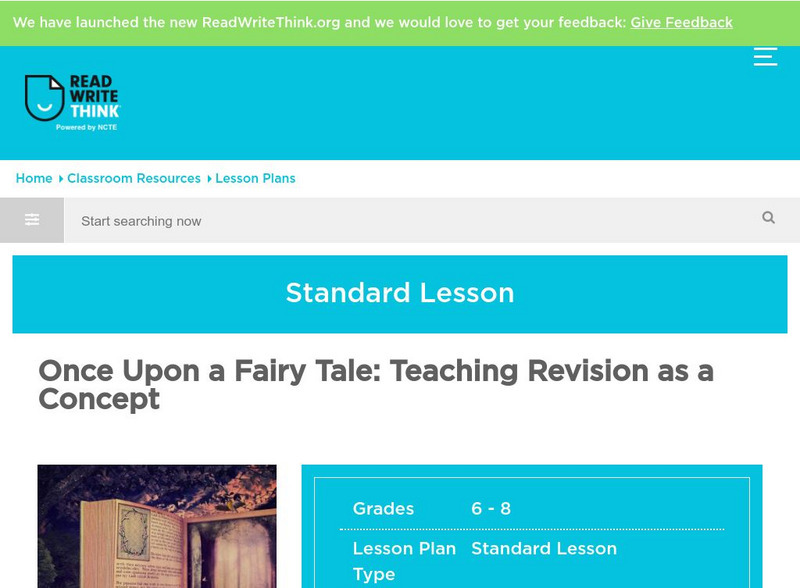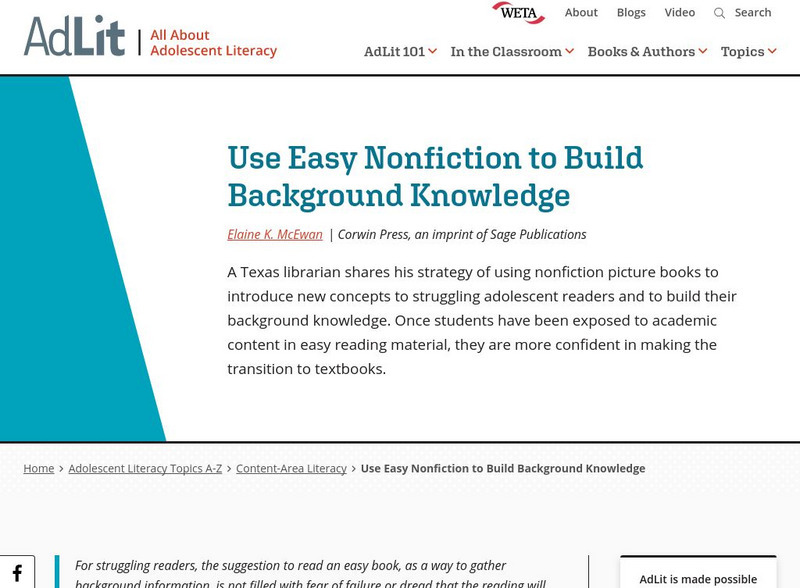Mr. Nussbaum
Money
Young readers test their comprehension skills with an interactive practice. Pupils read a brief informational text about money then answer five questions. A detailed page appears at the end to showcase participants' work.
ReadWriteThink
Read Write Think: Charting Characters for a More Complete Understanding
Contains plans for one 60-minute lesson plan that teaches about a reading strategy called Character Perspective Charting. In addition to student objectives and standards, these instructional plans contains links to PDF handouts and links...
ReadWriteThink
Read Write Think: Qa Rs to Develop Comprehension & Reflective Reading Habits
Contains plans for three lessons that use the QAR strategy to develop reading comprehension and reflective reading within students. In addition to objectives and standards, this instructional plan contains links to sites used in the...
ReadWriteThink
Read Write Think: Scaffolding Comprehension Strategies Using Graphic Organizers
A three-part standards-based lesson in which students will use collaborative strategic reading to apply four reading strategies: preview, click and clunk, get the gist, and wrap-up. They will work in cooperative groups while scaffolding...
International Reading Association
Using Bilingual Books in Esl and Mainstreamed Classrooms
The authors explain strategies for using bilingual books to foster literacy development with ESL learners. They argue that the presence of books in other languages in the classroom library sends a clear message about the value of...
International Reading Association
Using Bilingual Books in Esl and Mainstreamed Classrooms
The authors explain strategies for using bilingual books to foster literacy development with ESL learners. They argue that the presence of books in other languages in the classroom library sends a clear message about the value of...
Florida Center for Reading Research
Florida Center for Reading Research: Monitor for Understanding: Reading Repair
A lesson plan in which students read a text using different reading strategies to fix problems as they read. Materials are included. [PDF]
AdLit
Ad lit.org: Cognitive Strategies Toolkit
This article describes eight cognitive strategies - including monitoring, tapping prior knowledge, and making predictions - to help readers develop their comprehension skills.
Wisconsin Response to Intervention Center
Wisconsin Rt I Center: Draft Multiple Reading [Pdf]
Teachers will learn about the importance of using multiple readings. Teachers will learn how to implement multiple readings; measure progress with multiple readings; and find research to support multiple readings.
Utah Education Network
Uen: Using a Before Reading Organizer With Informational Text
This module provides strategies to use with informational text. Teachers will explicitly teach students about graphic organizers to use before reading informtational texts.
Auburn University
Auburn University: Using Decodable Text
How can you use decodable text in your classroom? This site offers insight into this necessary part of the reading process. Come and learn more.
Wisconsin Response to Intervention Center
Wisconsin Rt I Center: Qt a [Pdf]
Teachers will learn about the close reading strategy, QtA, Questioning the Author. Teachers will learn how to implement QtA; measure progress with QtA; and find research to support the use of QtA. A QtA graphic organizer is provided.
ReadWriteThink
Read Write Think: Family Ties Making Connections to Improve Reading Comprehension
Contains plans for five lessons that teach students to make authentic connections to reading selections. Lessons use books such as "Bigmama?s" by Donald Crews, "The Snowy Day" by Ezra Jack Keats, and "The Relatives Came" by Cynthia...
ReadWriteThink
Read Write Think: Searching Informational Texts
Online lesson allows elementary students to use prior knowledge, make predictions, and perform research on the Internet. Labeled "The Frog Beyond the Fairy Tale Character," lesson challenges students to examine print and online texts...
Other
Critical Reading: Three Ways to Read and Discuss Texts
Designed to help students think about their reading and writing skills, this page offers three different ways to interpret and discuss texts.
ReadWriteThink
Read Write Think: Increasing Comprehension Through Prediction Strategies
Contains plans for a lesson about predicting the outcomes of stories based off their first lines. In addition to objectives and standards, this instructional plan contains links to PDF handouts and sites used in the lessons as well as...
ReadWriteThink
Read Write Think: Guided Comprehension: Making Connections
Lesson introduces students to the strategy of making connections. Students learn the three types of connections using a double-entry journal. A good resource for teachers.
Alabama Learning Exchange
Alex: Using Technology in Teaching Reading
Elementary students, while working on their basal reader story for the week, will use various forms of technology to increase comprehension and other reading skills. (Other strategies may be substituted if some of the technology...
ReadWriteThink
Read Write Think: Applying Question?answer Relationships to Pictures
Contains plans for two lessons that develop young scholars' ability to ask questions about the pictures in a text. In addition to objectives and standards, this instructional plan contains links to sites used in the lessons as well as...
Read Works
Read Works: Excerpt From Martin Luther King Jr.'s Letter From Birmingham Jail
[Free Registration/Login Required] This primary source features a letter excerpt from Dr. Martin King, Jr. This passage is a stand-alone curricular piece that reinforces essential reading skills and strategies. Scaffolding for vocabulary...
ReadWriteThink
Read Write Think: Building Word Knowledge Through Informational Websites
A instructional activity through which middle schoolers identify, understand and work with important vocabulary words found in an online article on biodiversity. Based on the "Ten Important Words Plus" strategy that teachers can employ...
ReadWriteThink
Read Write Think: Once Upon a Fairy Tale Teaching Revision as a Concept
Contains plans for five lessons that teach the difference between revision and editing using fractured fairy tales. In addition to objectives and standards, this instructional plan contains links to sites used in the lessons as well as...
AdLit
Ad lit.org: Use Cooperative Learning Groups to Engage Learners
When teachers structure cooperative learning groups as part of the overall reading program, they also open the door to a multiple intelligences approach to literacy, which is inherent in cooperative learning. This article offers guidance...
AdLit
Ad lit.org: Use Easy Nonfiction to Build Background Knowledge
A Texas librarian shares his strategy of using nonfiction picture books to introduce new concepts to struggling adolescent readers and to build their background knowledge. Once students have been exposed to academic content in easy...




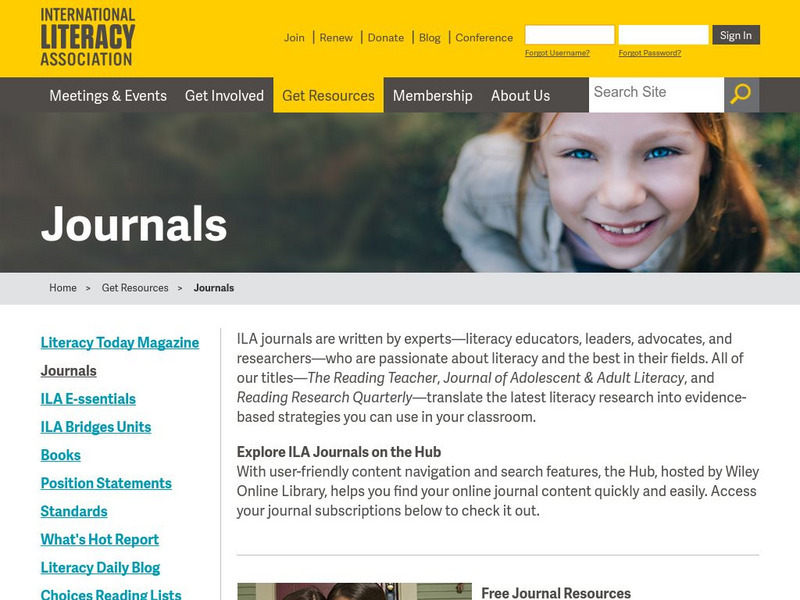
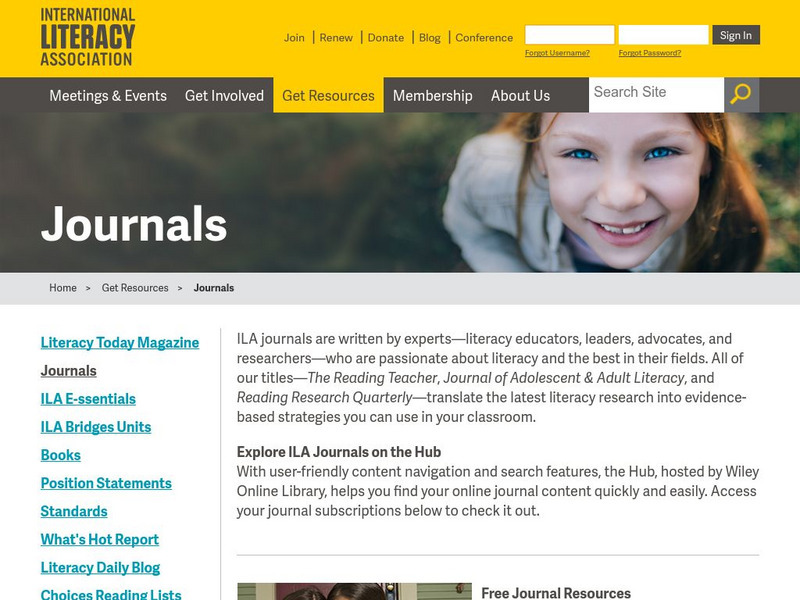

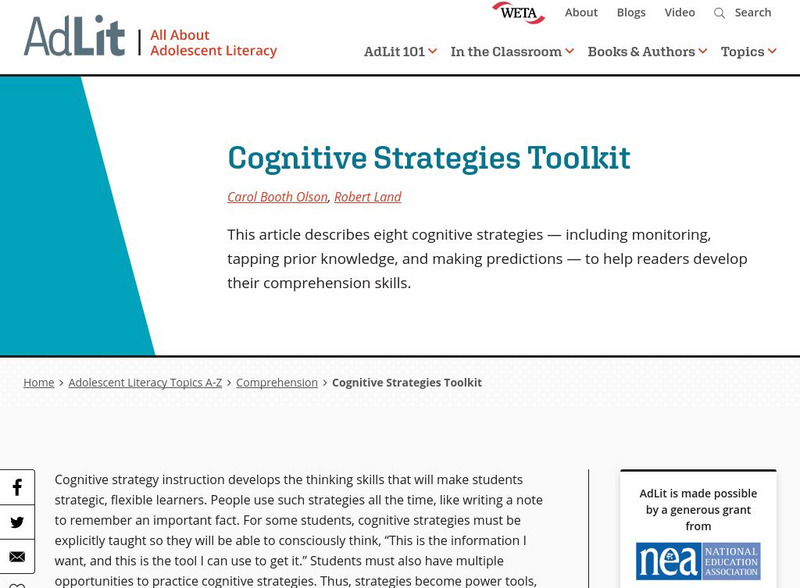
![Wisconsin Rt I Center: Draft Multiple Reading [Pdf] Professional Doc Wisconsin Rt I Center: Draft Multiple Reading [Pdf] Professional Doc](https://d15y2dacu3jp90.cloudfront.net/images/attachment_defaults/resource/large/FPO-knovation.png)










